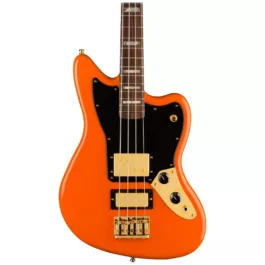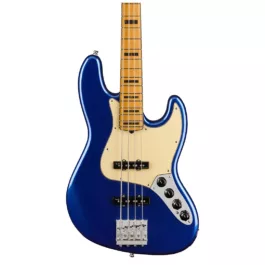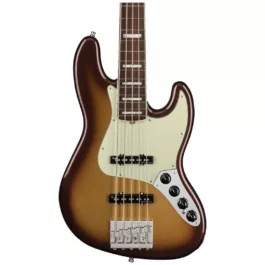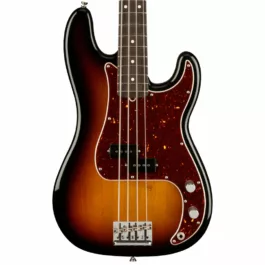
Without a doubt, the bass guitar is one of the most accessible instruments to jump into playing. When you’re just getting started, learning a few notes on the neck, and getting the basic fretting and fingering technique down is all you need to get moving playing root notes along with chord progressions… which is fantastic!
But the first big hurdle to overcome with the bass comes a few weeks in with “Okay, how do I do more?”.
Figuring out where to start can be a tricky situation, with Google searches yielding results about Scales, Modes, Intervallics, and everything in between. But all you really want is your first steps.
We’re going to look at some basic notes you can throw in over your chords to start feeling out what it’s like to play those “extra notes”. These are a great starting point, as they can work great over almost anything!
Note: If you have a basic understanding of the major scale, that will help you understand why these notes work a little bit more, but if not, don’t be deterred, you can still get to playing these notes today!
The Octave
The easiest place to start which will give you a ton of mileage is the Octave. You can find the higher Octave of any note by simply moving two strings up, and then two frets up. You can throw this note in without any hesitation as it is literally the same note, just in a higher register.
You don’t have to look very far to find bass players using octaves, as it’s not only an easy note to jump to, but also definitely the most popular.
The Fifth
Taking second place for popularity, and perhaps first place for ease of playing, is the Fifth. This note can be found either one string up, and two frets up from your root note, or simply one string down, depending on whether you’re looking for a higher or lower register
Tip: A great thing to take note of here is that the two options for the fifth are one octave apart from each other (use the explanation on “the Octave” to check this out for yourself!)
The Third
Also incredibly popular, and a great note to jump into early on, is the third.
Up until this point, we’ve been able to ignore whether the chord we’re playing over is Major or Minor, but the Third changes slightly between the two!
Major: Over a major chord, you’ll find the third by moving one string up, and one fret down from your root note.
Minor: Over a minor chord, you’ll find the third by moving one string up, and two frets down from your root!
When To Use Them
The most important part of getting to use these extra notes is learning to know what they sound like, so take your time, play through them one at a time, switch between the root note and the extra note, and try pay attention to the way they each sound in relation to the root note. The more you do this the more you’ll understand them and know just where to throw them in when playing.
If you’re curious what exactly is meant by “octave”, “third”, and “fifth”, don’t fret! Keep your eyes peeled for our upcoming piece on the major scale in the coming weeks that will explain it all! But for now, just get playing!
Find your next bass today...
-
Birthday Sale Deal!
- Guitar & Bass, Bass Guitars
Squier Classic Vibe ’70s Precision Bass®, Maple Fingerboard, Black
-
R19,095R13,555FREE DELIVERY - Select options
-
Birthday Sale Deal!
- Guitar & Bass, Bass Guitars
Fender Vintera® II ’60s Bass VI, Rosewood Fingerboard, Lake Placid Blue
-
R45,795R38,925FREE DELIVERY - Select options
-
Birthday Sale Deal!
- Guitar & Bass, Bass Guitars
Fender Limited Edition Mike Kerr Jaguar® Bass – Tiger’s Blood Orange
-
R43,895R42,580FREE DELIVERY - Select options
-
- Out of Stock
- Guitar & Bass, Bass Guitars
Fender Gold Foil Jazz Bass®, Ebony Fingerboard, 2-Color Sunburst
-
R42,595R36,205FREE DELIVERY - Select options
-
-
Birthday Sale Deal!
- Guitar & Bass, Bass Guitars
Fender American Ultra Jazz Bass®, Maple Fingerboard, Cobra Blue
-
R45,795R44,420FREE DELIVERY - Select options
-
Birthday Sale Deal!
- Guitar & Bass, Bass Guitars
Fender American Ultra Precision Bass®, Rosewood Fingerboard, Ultraburst
-
R55,295R53,635FREE DELIVERY - Select options
-
Request Stock
- Out of Stock
- Guitar & Bass, Bass Guitars
Fender American Ultra Jazz Bass® V, Rosewood Fingerboard, Mocha Burst
- R60,295FREE DELIVERY
- Select options
-
-
Request Stock
- Out of Stock
- Bass Guitars, Guitar & Bass
Fender American Professional II Jazz Bass® V, Rosewood Fingerboard, 3-Color Sunburst
- R49,895FREE DELIVERY
- Select options
-
















